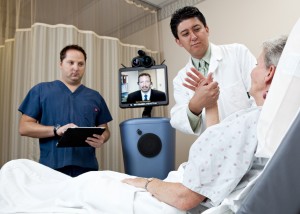March 10, 2015 – I have the greatest of respect for the role Mayo Clinic has played in my family’s life. My daughter was born in 1984 with a serious congenital heart defect and was treated here in Toronto at Hospital for Sick Children, a world-class institution. But every child and every defect are not equal and as our child aged she failed to grow and thrive. With two open-heart surgeries behind her, and the size of five-year old at age eleven, she was not thriving. The various specialities at Sick Kids – heart, lung, and nutrition could not come to agreement on a plan to address her complex problems and ensure her survival. A cardiologist friend referred us to Mayo Clinic and our government healthcare provider okayed our trip to Rochester, Minnesota, to consult with their medical team. We drove there spending close to a week with Mayo doctors, nutritionists, physiologists and nurses. Each day they would meet as a team with us to discuss their findings and pose more questions. After a few days they suggested a new approach for our daughter’s treatment, one that Sick Kids agreed to readily. The results were astonishing. Our daughter grew and achieved the milestones you want to see as a parent. There were more interventions but each meant she had a better chance to live a near-normal life. Today she is 30, married, and has a career in broadcasting.
Knowing what I witnessed back in the 1990s at Mayo made the story I read this week seem unsurprising. Mayo’s outreach as a world class medical institution is now employing advanced technologies including telecommunications, smartphones, robotics and telespresence in the development of a telestroke program. Using it Mayo neurologists diagnose stroke remotely and save lives while never leaving the confines of the Rochester campus.
Through telepresence they perform neurological examinations on patients hundreds if not thousands of kilometers away. They prescribe thrombolytics (clot-dissolving drugs) that are locally administered by the attending emergency physicians, or even intervene physically, through the use of remotely controlled robotic devices, to unblock an artery or blood vessel and save a life. This allows the patient to receive immediate attention and mitigates against any long-term stroke symptomes. It also allows the patient to be treated locally where they live.
This is how the program works:
- A patient is seen by an emergency doctor at a remote hospital. If an acute stroke is suspected the doctor calls a hotline. Mayo has vascular neurologists on call 24 hours a day, 365 days a year. The response happens within five minutes of the call.
-
The patient is given a local CT scan. The Mayo neurologist does a real-time telepresence consultation taking a complete medical history and reviewing the results of local tests and the scan.
-
The patient is then treated appropriately with either clot-dissolving therapies (thrombolytics) or other forms of intervention to reduce potential post-stroke symptoms.
-
All this happens within a 3 to 4 1/2 hour window to ensure an optimal recovery.
In 1995 the technology to perform this type of intervention had yet to be invented. If it had existed we would have been spared the two-day drive to get to Rochester from Toronto. Our daughter would have been “seen” in much the same way telestroke works today.
We are just at beginning of a new age in medical treatment, one in which telemedicine and telepresence will mean a new level of healthcare delivery wherever telecommunications can reach. It represents a paradigm shift in patient care, and it is no surprise to me that Mayo Clinic is taking a leadership role in using these 21st century technologies this way.
















